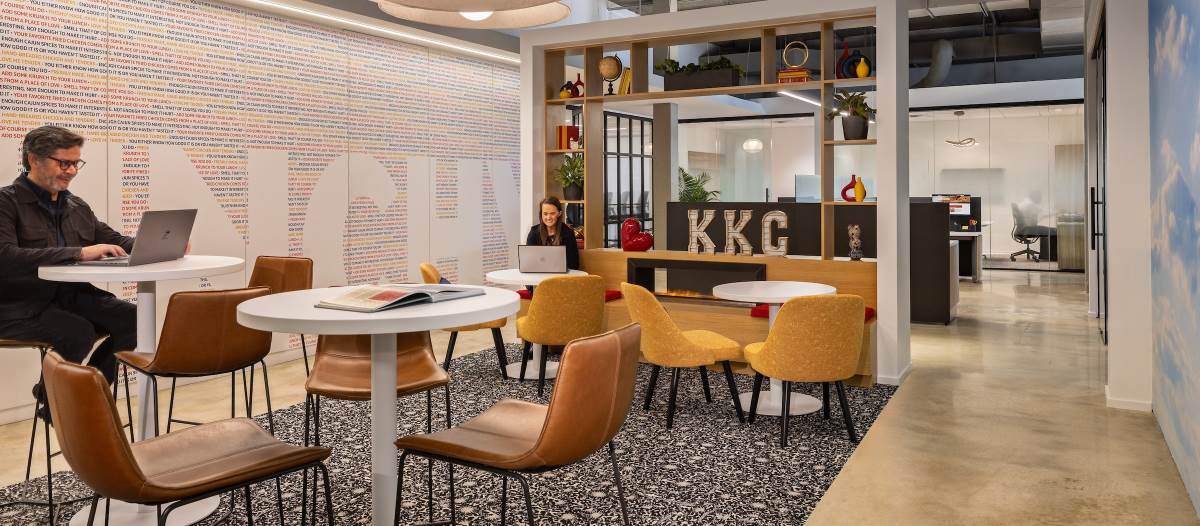Expect the Unexpected
A proactive approach to minimizing risks

Successful facility management teams must be able to handle whatever comes their way. Whether it is overflowing toilets, HVAC systems that suddenly stop working, storms that drop much more snow than predicted, or urgent, last-minute tenant requests, expecting the unexpected is critical.
It is particularly crucial for mitigating risks that lead to injuries – the majority of which come from slips, trips and falls. Their causes are many: the rush to take shortcuts, unattended spills, puddles and objects; overgrown landscapes and more. Often what it boils down to is that people are not paying attention when doing things that have become routine. After all, it is human nature.
It all stems from the brain
Every person has two brain systems: one is fast-thinking and handles automated behavior. The other is slower, more deliberate, and requires more energy. As Daniel Kahneman points out in his book, “Thinking, Fast and Slow,” a law of least effort applies to physical exertion. He says, “If there are several ways of achieving the same goal, people will gravitate to the least demanding course of action. Laziness is built deep into our nature.”
That is not necessarily a bad thing. It is needed to save energy so bodies and brains can focus on higher-level, more complex thinking and activities. However, this process can expose workers to unexpected risks doing things that do not seem dangerous at all, like walking. Even something as seemingly innocuous as a technician taking a call while walking on their building rounds or crossing a sidewalk can be risky when someone trips over something they did not notice.
Stress exacerbates mindlessness
With all the demands and unknowns that constantly arise in FM – and the pressure to fix problems quickly and keep customers happy – it is not surprising that workers sometimes experience stress.
To help alleviate some of the problems causing their stress, they may resort to taking shortcuts, such as carrying a heavy, large package up the stairs instead of taking an elevator or using a dolly; running down a hallway where, unbeknownst to them, a spill just occurred; or using what they know is the wrong tool because the right one is not on hand. Any of these actions can cause injuries.
When stress happens too often, it floods the body’s nervous system with cortisol and adrenaline that short-circuit important cognitive functions, such as the ability to focus and pay attention to the task at hand or the surrounding environment. This exacerbates FM workers’ challenges and, in turn, causes more stress and puts them more at risk.
Building a proactive safety culture
Nobody wants to be injured or cause injuries at work. But when people feel like they are under pressure to complete a job or help a customer, they may take calculated – and even uncalculated – risks. It is the FM services team’s job to mitigate that behavior. At a high level, the way to do this is by instilling a safety-first culture.
FM services supervisors and managers must understand – and communicate – that doing things safely is more important than doing them fast. Consider starting each meeting, regardless of the topic, with a safety tip or comment. For example, at the end of each shift, have everyone write down one safe or unsafe act or condition they noticed during their shift. Once a week, share the most valuable observations with the team. Doing so will make the team pay more attention to unsafe/safe acts when in the field and naturally cause them to think safety. The goal is to create routine habits of continuously looking for and avoiding unsafe situations, such as those akin to blowing on hot coffee before drinking it or checking the blind spot before changing lanes while driving.
Back this mindset up with actions. For instance, do not penalize workers if it takes them longer to do a task when doing it faster would have meant cutting corners or putting themselves, or others, at risk. Have managers remind people not to take shortcuts if they are seen doing so, and to take the time to do the task right the first time.
Communicate this to tenants and visitors as well. If a worker sees someone running across a busy parking lot, remind them to use the walking path instead. Or if a tenant is walking up the stairs holding a box that obstructs their view, offer to help transport the package in a safer way so no one falls. While some people may not heed the advice, others will. In any case, doing so helps promote the feeling that the FM pays attention to and cares about the well-being and safety of everyone on their premises – and can prevent costly injuries.
Mitigating slips, trips and falls
Many times, after people trip or fall, they acknowledge that they were not paying attention to their surroundings because they did not expect something to be in their path or to cause harm.
There is no way to ensure that everyone pays attention and makes the right safety-related decisions all the time. However, there are ways that FM organizations can mitigate the chance of incidents and help teams resist the innate urge to take shortcuts.
-
Improving floor safety
While it is impossible to stop people from spilling liquids and dropping things on floors, FM staff can take measures to improve the general safety of their facility’s floors.
First, recognize that builders and interior designers who determine the flooring options are not necessarily experts in which materials are best for which types of environments, or how easy – or difficult – they are to keep free of grime and chemicals that can cause slips.
Janitorial management should be involved in floor selection from the beginning, whether in new construction or renovations. They should know the best cleaning agent for the type of floor material. Keep in mind that there is likely a safer option for the material used. However, aesthetics also plays a role in decisions. It is important to find the right balance.
The coefficient of friction (COF) should be taken into consideration. The amount of friction an object has against the material will be affected by the chemicals used to clean it and the amount of cleaning that takes place. The cleaner it is, the safer it is.
Use COF meters on a regular basis to determine the COF of the facility’s various floor surfaces, assess the potential risk of slips and falls, and take corrective action when needed. This could include, for example, changing the flooring or using secure mats that go all the way from a lobby entrance to an elevator. Of course, the quality of mats also matters. Make sure they are clean and are not curling up.
-
Educating on best methods to transport packages
The opportunities for injury when moving heavy loads are numerous. One of the best ways to mitigate this is by limiting the number of times workers need to transport the same package. If they can move it to its final resting point the first time they touch it, they will reduce the chance of damage.
Require anybody who receives packages of a certain size to pick them up at the mailroom or lobby, where they are given a dolly or cart for transport and, if appropriate, directed to use the elevator.
Make sure workers know how to use different dollies and moving equipment. Some are better suited for loading docks rather than smooth tiles or flooring. Others are better for transporting over stairs instead of long hallways.
-
Using caution with inclement weather
People drive slower in inclement weather. Just like cars hydroplaning during rainstorms or on icy roads, so can the heels of people’s shoes on watery sidewalks, parking lots and lobbies.
Use signage to indicate ice alerts, wet areas and places where people should slow down. Where available, encourage people to take advantage of handrails, and keep walkways and parking areas clear of ice and snow. Umbrella bags should be handy and visible at lobby entrances, and high-quality mats placed from entry areas all the way to staircases and elevators.
-
Safely interacting with building occupants
FM services workers often have a customer-first mindset, with an instinct to address a customer’s concerns right away. However, this can increase the risk of injuries, for instance, if a worker carries on a conversation with a tenant while standing on a ladder fixing a 277-volt light ballast or turning a wrench under a sink.
Safety should come first. Make sure staff understand that it is okay to ask customers to wait a moment so they can complete their task; or at minimum, come down the ladder or out from under the sink to speak with the customer.
-
Be extra attentive in back-of-house spaces
Because tenants and visitors never go to places like staff break rooms, locker rooms, mechanical spaces and back-of-house hallways, these low-visibility areas are often not maintained to the same high levels as front-of-house areas. That makes them more prone to causing injuries due to things like grease that spills on the floor while being carried to a dumpster or trash or equipment left in the middle of a floor.
Janitorial teams must ensure back-of-house areas are clean and properly maintained, and that signage is readily available to indicate slippery or dangerous areas.
FM workers get injured because something unanticipated happens – even when it should be expected and could be prevented. FM organizations must plan for all potential scenarios to limit risks, injuries and liabilities.

Adam Rabesa is director of environmental health and safety at UG2. After graduating from Massachusetts Maritime Academy, he started his professional career in a role where he made dramatic improvements in lost time injury rate, total recordable injury rate and claims. Prior to UG2, he was a compliance officer championing injury prevention and risk mitigation on board the world’s largest passenger vessel, Oasis of the Seas. Over his career Rabesa has had extensive experience in regulatory compliance and behavior-based safety. At UG2, he leads national risk mitigation efforts for all sectors of business, driving safety culture and oversees regulatory compliance including, but not limited to, DOT, EPCRA, OSHA 1910, OSHA 1926 and NRC.
Read more on Occupancy & Human Factors , Risk Management and Training
Explore All FMJ Topics









